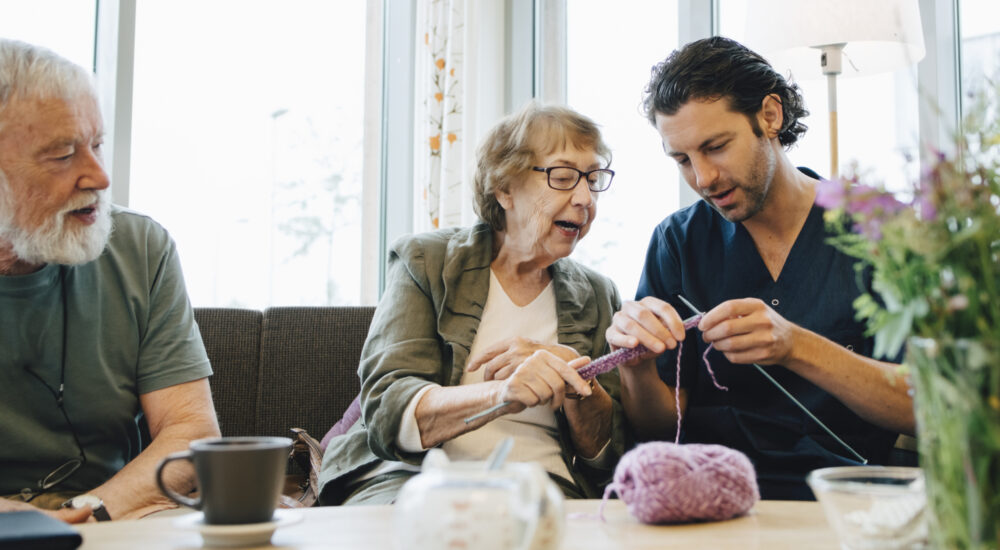It's time to rethink residential aged care

In partnership the University of Melbourne and MacKillop Institute are calling for a whole of sector rethink about the delivery of residential aged care in Australia. The researchers believe the system - widely considered unsustainable in its existing form - should move beyond its current 'nursing' model. In contrast, we should conceptualise residential settings as 'intentional communities' that provide a home 'sanctuary' for residents.
In Australia on any given day approximately 240,000 older Australians with an average age of 85 are living in residential aged care homes, two-thirds of them women.
“The provision of aged care is one of the largest human services expense for governments,” says Professor Ralph Hampson from the University of Melbourne's School of Health Sciences, who is co-author of a new discussion paper on residential aged care.
“With the number of Australians 85 years and over projected to double to over one million by 2042 higher demand for places, and more pressure on the system in the coming decades is clearly inevitable. In fact, we know that anyone who lives beyond the age of 75 will probably need residential aged care at some point in their lives.”
Evidence also shows people experience trepidation and fear around the possibility of entering aged care, with stressors including concerns about loss of independence, identity and community, changes to relationships, losing their pets, and leaving their homes.
Widespread system failures caused by the COVID-19 pandemic, a damning 2021 report from the Royal Commission into Aged Care Quality and Safety, coupled with the pending Australian Federal Election and its prospect for change, have presented the community a unique opportunity to reassess the direction of aged care, according to Associate Professor Hampson and his collaborator (MacKillop Institute's Cameron Burgess).
“This is the right moment for a nationwide conversation about aged care: not just how to fund it, but what we think it should look like, and what it might be for,” Associate Professor Hampson says.
“We've lost the heart of what aged-care provision is about. The issues go beyond just dollars and staffing ratios. Care, love and relationships are central to the model of care - and that's what we need to talk about.”
“Findings show that older people prosper when they have connections to real activities, and to communities, so we need to think about taking aged care beyond a transactional system - beyond warehousing older people - and look at the whole offering.
“It's our belief that the experience of living in residential aged care can and should be one of 'journey' rather than 'destination'.”
The Sanctuary concept
In their conversation paper, the research partners consider the Sanctuary model as a new way of visioning residential aged care.
Conceptualising care settings within the Sanctuary model means providing a safe and healing space for people that is trauma-informed, which means the focus of care shifts from 'what's wrong with you', to 'what's happened to you'?
“People enter residential aged care with a huge range of life-experience,” Dr Tobin says, “and it's almost inevitable that each one of them will have experienced some form of trauma in their lives.
The model also acknowledges that staff working in care settings are part of that community, not only employees of an organisation.
“MacKillop community service organisations use the Sanctuary model to create safe and healing communities where people are supported to cope effectively with stress and trauma and promote their emotional and behavioural health. It's widely used in disability and child protection settings, and we think its application to aged care can only benefit residents, their families, and the people involved in the provision of care in these settings.”
“We're excited to partner with providers, to explore opportunities, share insights and most importantly to listen and to work together to improve care where the situation is recognised as being untenable. Together, so much more is possible,” Dr Tobin says.

